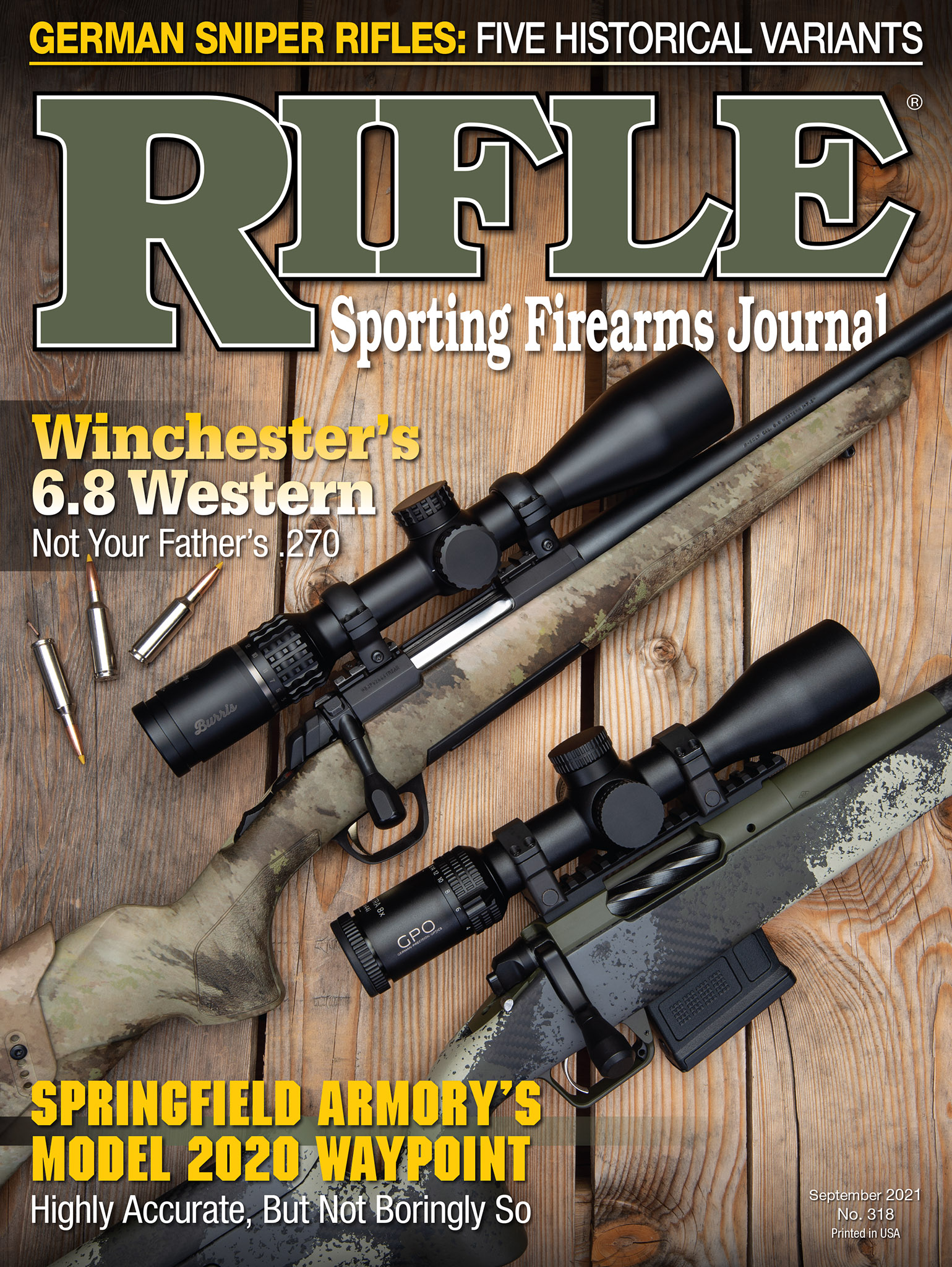Down Range
Groups and Marksmanship
column By: Mike Venturino | September, 21
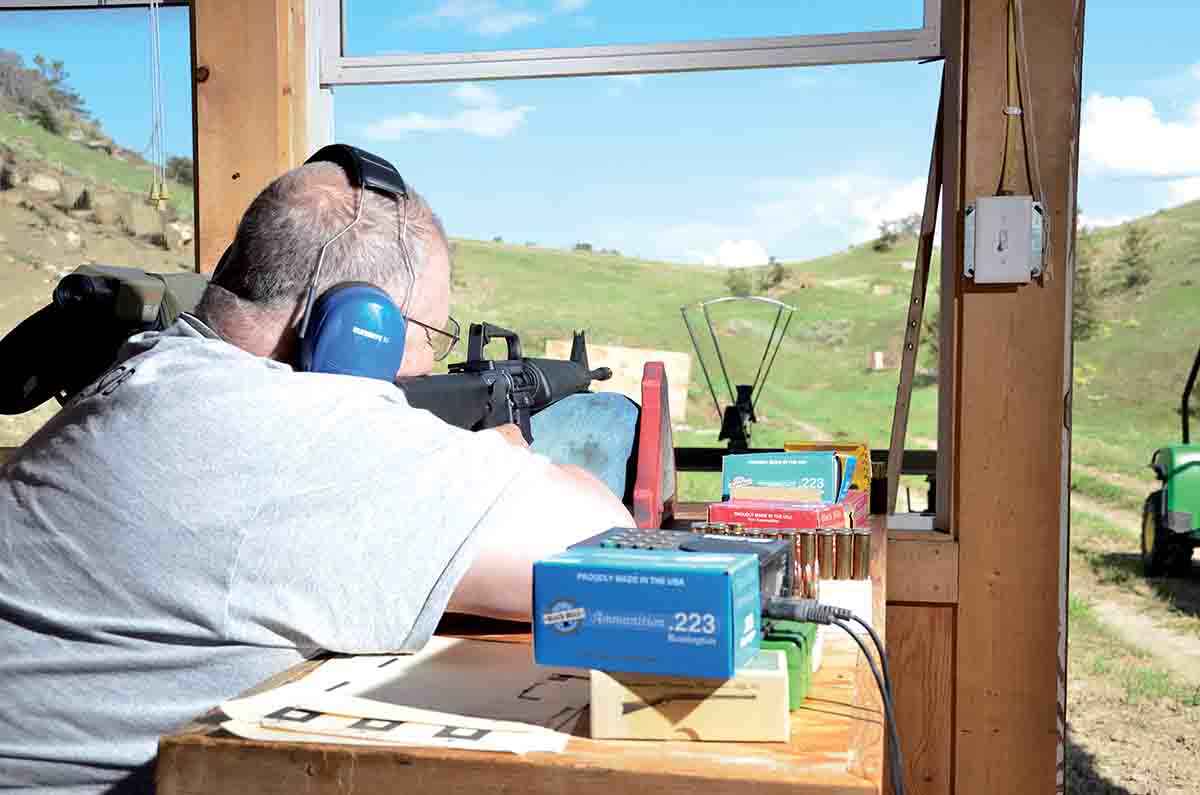
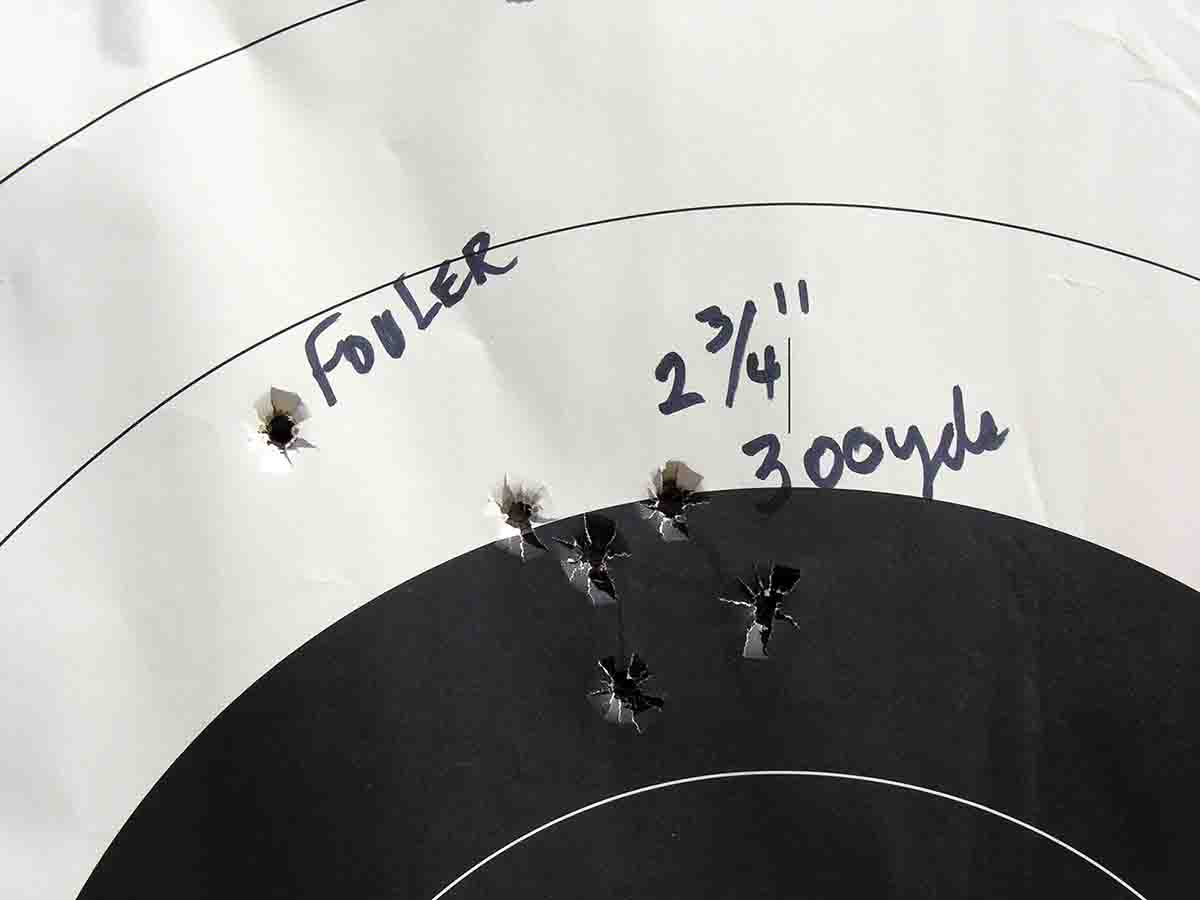
That’s where group shooting should end and marksmanship should begin. Shooting fine “bragging” groups should not be an end in itself. More important to group shooting is actually hitting a target. Nobody shoots a group at a game animal. The idea is to hit it with the first shot. Except in benchrest competition, nobody shoots groups at their targets, whether paper or steel. The idea in most competitions is to hit as close to center as possible, with each shot being the shooter’s sole focus. At a vintage military match, one time I shot a beautifully small group. If there had been an award for tightest group, I would have been a contender. Unfortunately, my group was at six o’clock at the very bottom of the target paper. Unnoticed by me, my Springfield Model 1903A3’s rear sight was bottomed out.
Just a few days before writing this, I competed in a BPCR Silhouette Match using the above mentioned Lone Star rolling block .40-65 mounted with a MVA 6x scope. When shooting at the 500 meter rams, my first shot caught it almost a foot left of center. I didn’t try to put the next shot right on top of it as we would do in group shooting. Instead, my spotter gave me a correction, attempting to have me hit the center. Every shot in my 10-round relay did not hit center, but that’s where we were trying to put them.
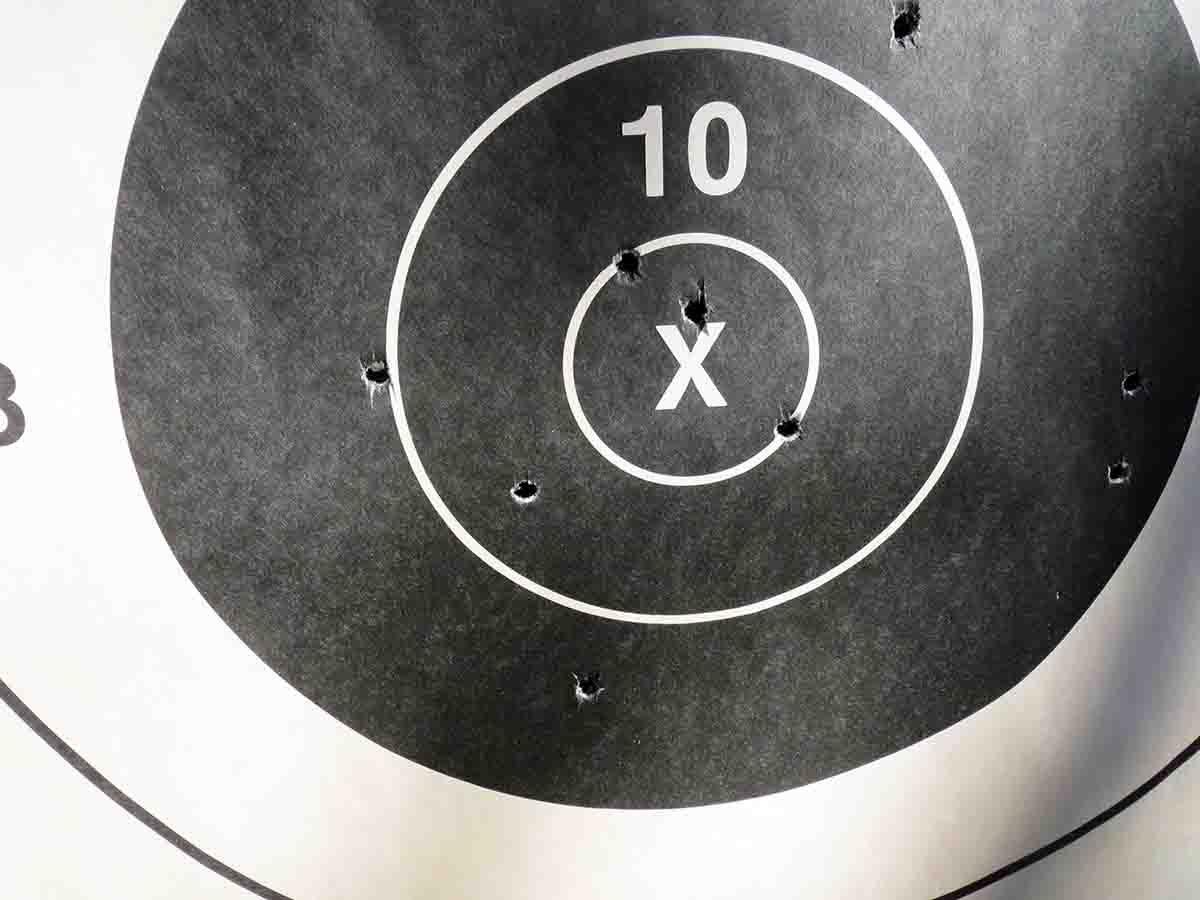
Here’s a fact: When we shoot groups, the aim point is the same for every shot. That’s because we’re looking for the dispersion that particular load gives from that particular rifle. However, in marksmanship, the shooter or his spotter/coach must read the wind and either dial changes into his scope if time allows, or hold off for windage if it doesn’t. In the silhouette match mentioned in the above paragraph, Montana’s stiff winds showed sudden increases and decreases on the range flags. On those ram targets, my spotter was saying for almost every shot, “Mike, hold on the hind leg.” Or, “Mike, hold on its chest.”
Perhaps some readers are thinking that I’m being a hypocrite because we gun writers are forever shooting groups and posting them in articles. If they don’t count for much, why do we do it? First, that is our job; showing the result of a mix of powder/primer/bullet combinations. The idea is to give readers a place to start. Most recently, I shot a Cimarron Arms .32-20 Model 1873 lever gun over chronograph screens at paper targets. One load gave a velocity variation of five rounds of only 17 feet per second (fps). Another gave 124 fps in five rounds. Group sizes corresponded with the velocity variations. The high variation load printed its shots almost in a perfect vertical line. Which load do you think readers will start with in developing their own .32-20 handloads?
A question I think about is, “When did the concept of group shooting appear?” I have no idea. In my considerable study of shooting going back even to muzzleloaders, I don’t remember any of the old-timers discussing groups. What they did relate in their writings were contests of marksmanship, such as shooting at “marks,” which could have been a knot hole on a tree or a distinctive rock on a distant hillside. I suspect group shooting appeared along with firearms periodicals because writers needed some manner by which to qualify a rifle’s (or handgun’s) performance. Group shooting has now become a staple of all shooting media.
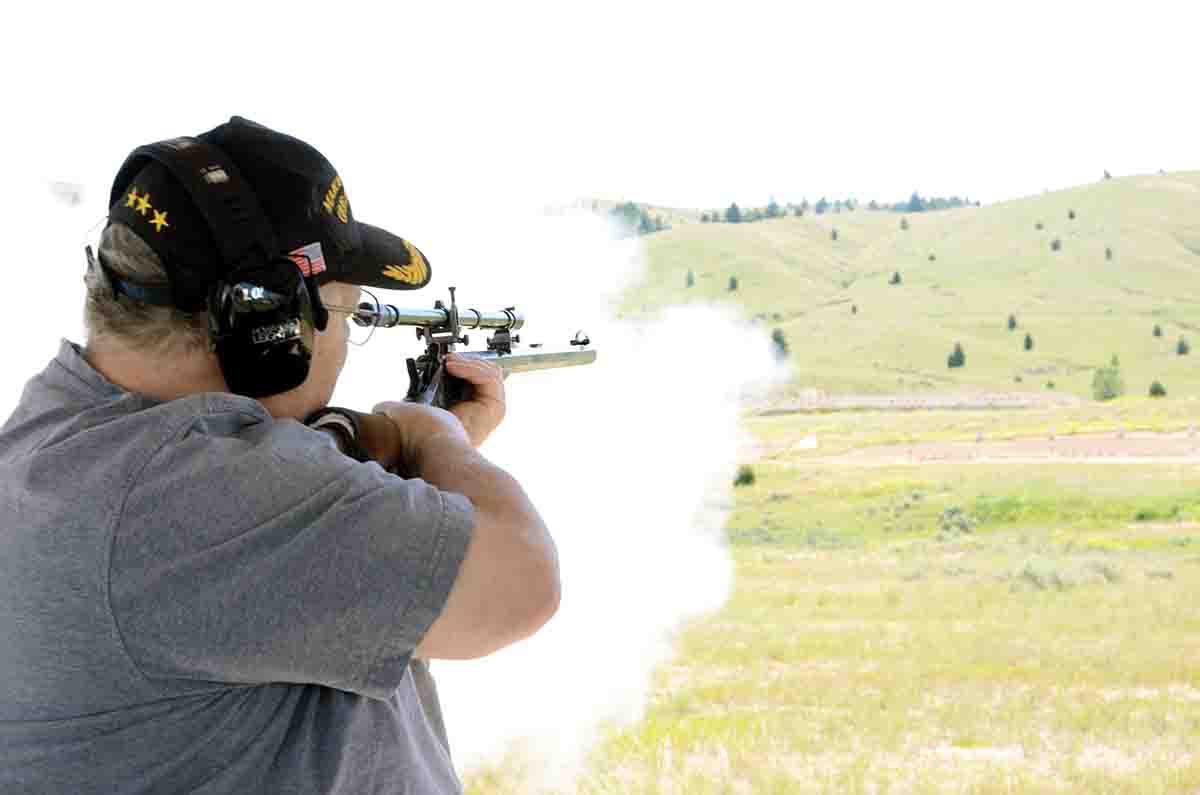
How many readers do this? If I’m going to begin firing an array of test loads, I first shoot a fouling shot or two into the berm. Then the process of shooting groups starts. Also, if I’m changing lubes in cast bullet testing, I’ll fire a couple of “foulers” to get the barrel prepped for the new lube. If those “foulers” are included on the paper targets, they are invariably out of the following group. When hunting, we don’t get “foulers.” It’s the first shot that counts.
I have fired thousands of groups on paper and to be honest, I enjoy group shooting. To me, it is a relaxing and learning experience. However, I’m the first to admit that all that shooting from a sandbag rest didn’t make me a great marksman. This I learned quickly when becoming a competitor. It has taken years of competition shooting to improve my marksmanship abilities. That is still a work in progress.


